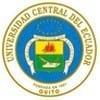Whole-Genome Sequencing of Salmonella enterica Serovar Infantis and Kentucky Isolates Obtained from Layer Poultry Farms in Ecuador
Author details:
1 UTA-RAM-One Health, Centro de Investigaciones Agropecuarias, Facultad de Ciencias Agropecuarias, Universidad Técnica de Ambato (UTA), Ambato, Ecuador; 2 Faculty of Science and Engineering in Food and Biotechnology, Universidad Técnica de Ambato (UTA), Ambato, Ecuador; 3 New York State Department of Agriculture and Markets, Food Laboratory, Albany, New York, USA; 4 Institute of Parasitology, McGill University, Montreal, Quebec, Canada; 5 Facultad de Medicina Veterinaria y Zootecnia, Universidad Central del Ecuador, Quito, Ecuador.

1. World Health Organization. 2015. WHO estimates of the global burden of foodborne diseases. World Health Organization, Geneva, Switzerland.
2. EFSA, ECDC. 2018. The European Union summary report on trends and sources of zoonoses, zoonotic agents and food-borne outbreaks in 2017. EFSA J 16:e05500. https://doi.org/10.2903/j.efsa.2018.5500.
3. Majowicz SE, Musto J, Scallan E, Angulo FJ, Kirk M, O’Brien SJ, Jones TF, Fazil A, Hoekstra RM, International Collaboration on Enteric Disease “Burden of Illness” Studies. 2010. The global burden of nontyphoidal Salmonella gastroenteritis. Clin Infect Dis 50:882– 889. https://doi.org/10 .1086/650733.
4. Balasubramanian R, Im J, Lee JS, Jeon HJ, Mogeni OD, Kim JH, Rakotozan drindrainy R, Baker S, Marks F. 2019. The global burden and epidemiology of invasive non-typhoidal Salmonella infections. Hum Vaccin Immunother 15:1421–1426. https://doi.org/10.1080/21645515.2018.1504717.
5. Granda A, Riveros M, Martínez-Puchol S, Ocampo K, Laureano-Adame L, Corujo A, Reyes I, Ruiz J, Ochoa TJ. 2019. Presence of extended-spectrum -lactamase, CTX-M-65 in Salmonella enterica serovar Infantis isolated from children with diarrhea in Lima, Peru. J Pediatr Infect Dis 14: 194 –200. https://doi.org/10.1055/s-0039-1685502.
6. Silva C, Betancor L, García C, Astocondor L, Hinostroza N, Bisio J, Rivera J, Perezgasga L, Pérez Escanda V, Yim L, Jacobs J, García-del Portillo F, SalmoIber CYTED Network, Chabalgoity JA, Puente JL. 2017. Characterization of Salmonella enterica isolates causing bacteremia in Lima, Peru, using multiple typing methods. PLoS One 12:e0189946. https://doi.org/ 10.1371/journal.pone.0189946.
7. Monte DF, Lincopan N, Berman H, Cerdeira L, Keelara S, Thakur S, Fedorka-Cray PJ, Landgraf M. 2019. Genomic features of high-priority Salmonella enterica serovars circulating in the food production chain, Brazil, 2000 –2016. Sci Rep 9:1–12. https://doi.org/10.1038/s41598-019 -45838-0
8. Cartelle Gestal M, Zurita J, Paz y Mino A, Ortega-Paredes D, Alcocer I. 2016. Characterization of a small outbreak of Salmonella enterica serovar Infantis that harbor CTX-M-65 in Ecuador. Braz J Infect Dis 20:406 – 407. https://doi.org/10.1016/j.bjid.2016.03.007.
9. Salazar GA, Guerrero-López R, Lalaleo L, Avilés-Esquivel D, Vinueza Burgos C, Calero-Cáceres W. 2019. Presence and diversity of Salmonella isolated from layer farms in central Ecuador. F1000Res 8:235. https://doi .org/10.12688/f1000research.18233.2.
10. Vinueza-Burgos C, Cevallos M, Ron-Garrido L, Bertrand S, De Zutter L. 2016. Prevalence and diversity of Salmonella serotypes in Ecuadorian broilers at slaughter age. PLoS One 11:e0159567. https://doi.org/10.1371/ journal.pone.0159567.
11. Tate H, Folster JP, Hsu CH, Chen J, Hoffmann M, Li C, Morales C, Tyson GH, Mukherjee S, Brown AC, Green A, Wilson W, Dessai U, Abbott J, Joseph L, Haro J, Ayers S, McDermott PF, Zhao S. 2017. Comparative analysis of extended-spectrum-ß-lactamase CTX-M-65-producing Salmonella enterica serovar Infantis isolates from humans, food animals, and retail chickens in the United States. Antimicrob Agents Chemother 61:e00488-17. https://doi.org/10.1128/AAC.00488-17.
12. Brown AC, Chen JC, Watkins LKF, Campbell D, Folster JP, Tate H, Wasilenko J, Van Tubbergen C, Friedman CR. 2018. CTX-M-65 extendedspectrum -lactamase–producing Salmonella enterica serotype Infantis, United States. Emerg Infect Dis 24:2284 –2291. https://doi.org/10.3201/ eid2412.180500.
13. Souvorov A, Agarwala R, Lipman DJ. 2018. SKESA: strategic k-mer extension for scrupulous assemblies. Genome Biol 19:153. https://doi.org/ 10.1186/s13059-018-1540-z
14. Parks DH, Imelfort M, Skennerton CT, Hugenholtz P, Tyson GW. 2015. CheckM: assessing the quality of microbial genomes recovered from isolates, single cells, and metagenomes. Genome Res 25:1043–1055. https://doi.org/10.1101/gr.186072.114.
15. Gurevich A, Saveliev V, Vyahhi N, Tesler G. 2013. QUAST: quality assessment tool for genome assemblies. Bioinformatics 29:1072–1075. https:// doi.org/10.1093/bioinformatics/btt086.
16. Zhang S, Yin Y, Jones MB, Zhang Z, Deatherage Kaiser BL, Dinsmore BA, Fitzgerald C, Fields PI, Deng X. 2015. Salmonella serotype determination utilizing high-throughput genome sequencing data. J Clin Microbiol 53:1685–1692. https://doi.org/10.1128/JCM.00323-15.
17. Larsen MV, Cosentino S, Rasmussen S, Friis C, Hasman H, Marvig RL, Jelsbak L, Sicheritz-Pontén T, Ussery DW, Aarestrup FM, Lund O. 2012. Multilocus sequence typing of total-genome-sequenced bacteria. J Clin Microbiol 50:1355–1361. https://doi.org/10.1128/JCM.06094-11.
18. Carattoli A, Zankari E, Garciá-Fernández A, Larsen MV, Lund O, Villa L, Aarestrup FM, Hasman H. 2014. In silico detection and typing of plasmids using PlasmidFinder and plasmid multilocus sequence typing. Antimicrob Agents Chemother 58:3895–3903. https://doi.org/10.1128/ AAC.02412-14.
19. Cosentino S, Voldby Larsen M, Møller Aarestrup F, Lund O. 2013. PathogenFinder— distinguishing friend from foe using bacterial whole genome sequence data. PLoS One 8:e77302. https://doi.org/10.1371/ journal.pone.0077302.
20. Center for Genomic Epidemiology. 2020. SPIFinder (version 1.0). https:// cge.cbs.dtu.dk/services/SPIFinder/
















